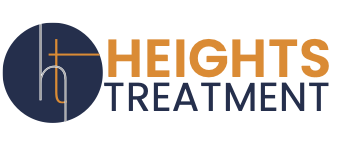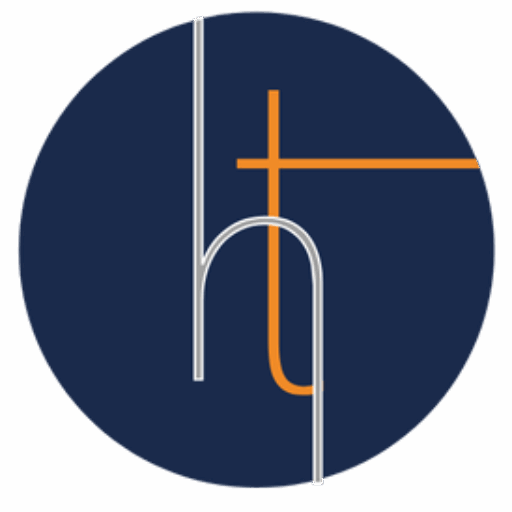An advanced, medication-free approach to improving emotional balance, focus, and long-term wellness.
What Is Neurofeedback Therapy?
Neurofeedback is a science-backed therapeutic approach that measures real-time brainwave activity and helps train the brain toward healthier, more efficient patterns. Using EEG-based technology, neurofeedback identifies areas of dysregulation involved in symptoms such as anxiety, depression, trauma responses, attention difficulties, and cognitive fatigue.
Unlike diagnostic scans that only observe the brain, neurofeedback provides structured feedback that helps the brain learn how to self-correct. Over time, patients build stronger emotional regulation, increased resilience, improved focus, and healthier behavioral patterns.
At The Heights Treatment in Houston, we offer individual neurofeedback and qEEG brain mapping sessions as stand-alone services or as part of our Individualized Intensive Program.
What Happens During a Neurofeedback Session?
Neurofeedback sessions are comfortable, noninvasive, and tailored to each patient’s needs. During treatment:
- Small electrode sensors are placed on the scalp to measure electrical activity.
- These sensors collect information only. They do not send signals into the brain.
- Patients may watch a movie, listen to music, or engage with visual or auditory cues that respond to brainwave patterns.
- When the brain shifts into a healthier state, the feedback changes, helping reinforce the desired pattern.
Over time, this repeated reinforcement strengthens the brain’s ability to self-regulate. Many patients describe neurofeedback as calming, clarifying, and grounding, with benefits that continue beyond the session.
What Can Neurofeedback Treat?
Research shows neurofeedback can support individuals experiencing:
- Anxiety
- Depression
- Post-traumatic stress
- ADHD symptoms
- Behavioral dysregulation
- Insomnia
- Chronic stress
- Substance use patterns linked to cognitive dysregulation
- Emotional reactivity
- Cognitive fatigue and difficulty concentrating
For individuals navigating recovery from substance use or mental health challenges, neurofeedback can complement traditional therapy by improving focus, stabilizing mood, and enhancing stress tolerance.
Neurofeedback vs. Neurologics: A Comparison
Neurofeedback vs. Neurologics: A Comparison
Both neurofeedback and neurologics involve understanding how the brain functions, though the approaches differ.
Neurofeedback focuses on helping the brain move toward healthier patterns through feedback-based training that supports emotional stability, improved attention, and healthier responses to stress.
Neurologics is a deeper, more diagnostic approach that uses qEEG and neuroengineering to examine root-cause abnormalities in brain functioning. It identifies underactive or overactive regions and provides individualized interventions to support long-term neurological improvement.
Patients may benefit from combining qEEG brain mapping with neurofeedback to build a clear picture of their cognitive functioning and track progress over time.
Neurologics: An Effective Addiction Treatment
Neurologics begins with a qEEG brain map, a detailed measurement of electrical activity across multiple regions. This map reveals:
- Which areas are overactive or underactive
- How different parts of the brain communicate
- Patterns associated with mood, cognition, attention, and stress response
Using this information, providers develop personalized protocols that help retrain dysfunctional patterns. Treatment may include targeted exercises, neurofeedback sessions, and structured activities designed to improve cognitive efficiency, emotional regulation, and overall mental performance.
By targeting and disrupting the parts of the brain associated with anxiety, stress, pleasure, reward, and attention or impairment processing, Neurologic practices help to optimize brain function and improve recovery success. Patients are less vulnerable to stress-induced relapse and build a greater level of resilience.[2]
How Neurologics Works
The field of neuroscience is constantly evolving to gain a better understanding of the brain and enhance the human experience. Unlike Neurofeedback, Neuroengineering is able to target and address specific causes of neurological dysfunction using a precise map of each patient’s brain activity.
A qEEG, (Quantitative Electroencephalography) measures electrical brain activity in more detail than other electric scans. This type of scan is able to determine levels of brain activity as well as cognitive function. It accurately detects abnormalities that may have been caused by substance abuse, brain trauma, mood disorders, learning disabilities, and developmental disorders.
This implementation process of both treatments feels similar in that electrodes are placed on the scalp. The patient is then presented with a personalized protocol of exercises designed to optimize brain function. Over time, these functions are sharpened and enhanced, alleviating the symptoms and effects associated with the disorder.

Our Levels of Care
At The Heights Treatment, we offer several treatment programs that are customized to fit the individual needs of each patient. From psychotherapy and group therapy to neurofeedback therapy and experiential therapy, our clinicians are here to facilitate recovery and healing at every encounter.
Our treatment programs take place during the day so our patients can fully commit themselves to recovery without distractions. This also provides the flexibility needed to attend to their career, school, or family obligations in the evenings.
Individualized Intensive Program (IIP)
IIP is ideal for patients transitioning from a higher level of treatment or an inpatient program. This program offers evidence-based modalities and an integrative approach, but patients still have the flexibility to balance their recovery with responsibilities at work, home, or school.

Partial Hospitalization Program (PHP)
A PHP is an intensive level of outpatient care that’s ideal for patients transitioning from a residential treatment program or IIP. Patients still have the flexibility to tend to work, home, or school but benefit from a structured environment for treatment and care in our welcoming rehab center in Houston.

Intensive Outpatient Program (IOP)
Our IOP is a good fit for patients who have completed IIP or inpatient treatment but may need more rigorous care than an outpatient program. This program can help patients who have taken the first step toward recovery on their own and need more long-term support, treatment, and accountability.

Outpatient Program (OP)
Mental health treatment programs provide evidence-based behavioral health therapy and psychiatry. A positive community of peer support, family therapy sessions, and a compassionate staff with an individualized, strategic plan. Patients learn skills like positive awareness, coping skills, interpersonal effectiveness, and mindfulness in regular therapy sessions.

Holistic Treatment at The Heights Treatment
Our outpatient treatment programs focus on evidence-based modalities designed to empower the whole person, from the inside out. We only use industry-leading and effective therapies backed by scientific data and field-relevant studies.
Our behavioral health and addiction treatment center leverages a blend of individual and group therapies to a path for holistic treatment for substance abuse and mental health disorders.
Some of our therapies include:

FAQs About Neurofeedback Therapy
Answers to some of the most frequently asked questions about neurofeedback therapy:
Does Neurofeedback Have Any Side Effects?
Most people tolerate neurofeedback well, though some experience temporary side effects such as mild fatigue, headache, or emotional sensitivity as the brain adjusts. Side effects are typically short-lived and decrease significantly when treatment is administered by trained professionals.
Potential side effects include:
- Headaches
- Dizziness
- Impairment
- Anxiety
- Fatigue or drowsiness
- Tension or vibrations
Does Neurofeedback Have Any Risks?
Neurofeedback therapy is a safe treatment and is associated with only minimal risks. In addition to the potential side effects above, there is a risk of ineffective treatment administered by an unskilled clinician or if attempted by the patient. In this case, it could be a waste of time and resources.
How Long Does Neurofeedback Take to Work?
For most patients, significant progress can be made in as little as 3 to 4 weeks or with 6 to 8 sessions. Others experience the benefits of neurofeedback immediately.
Can Neurofeedback Help With Neuroplasticity?
Yes! Neuroplasticity is the brain’s ability to recognize the connectivity of inquiry to the response. In short, the connection between an impulse, feeling, or thought and the subsequent actions. Neurofeedback encourages the neuroplasticity process to activate desirable behavior changes.
What are Brainwave Patterns?
Brainwave patterns, such as alpha waves and theta waves, are the patterns of electric activity in the brain and represent internal brain functions like thoughts, behaviors, and emotions. These patterns reveal the connectivity between function and action.
What is Brainmapping?
Brain mapping is a technique in the field of neuroscience that’s based on the depiction of spatial regions of the brain. During brain mapping, the clinician would identify the area of the brain that controls a specific action, such as speech, vision, and movement, for the purpose of measuring activity or before performing a surgical operation.
Does Neurotherapy Help With Self-Regulation?
Yes. Neurotherapy is a nonpharmacological treatment to reduce the effects of physical or emotional conditions without the use of medication for the purpose of improving self-regulation and activating positive behavior change.
Recovery is Within Reach.
Begin neurofeedback therapy in Houston to support healing from anxiety, trauma, mood disorders, attention difficulties, substance use patterns, and cognitive imbalance.
Contact Us

